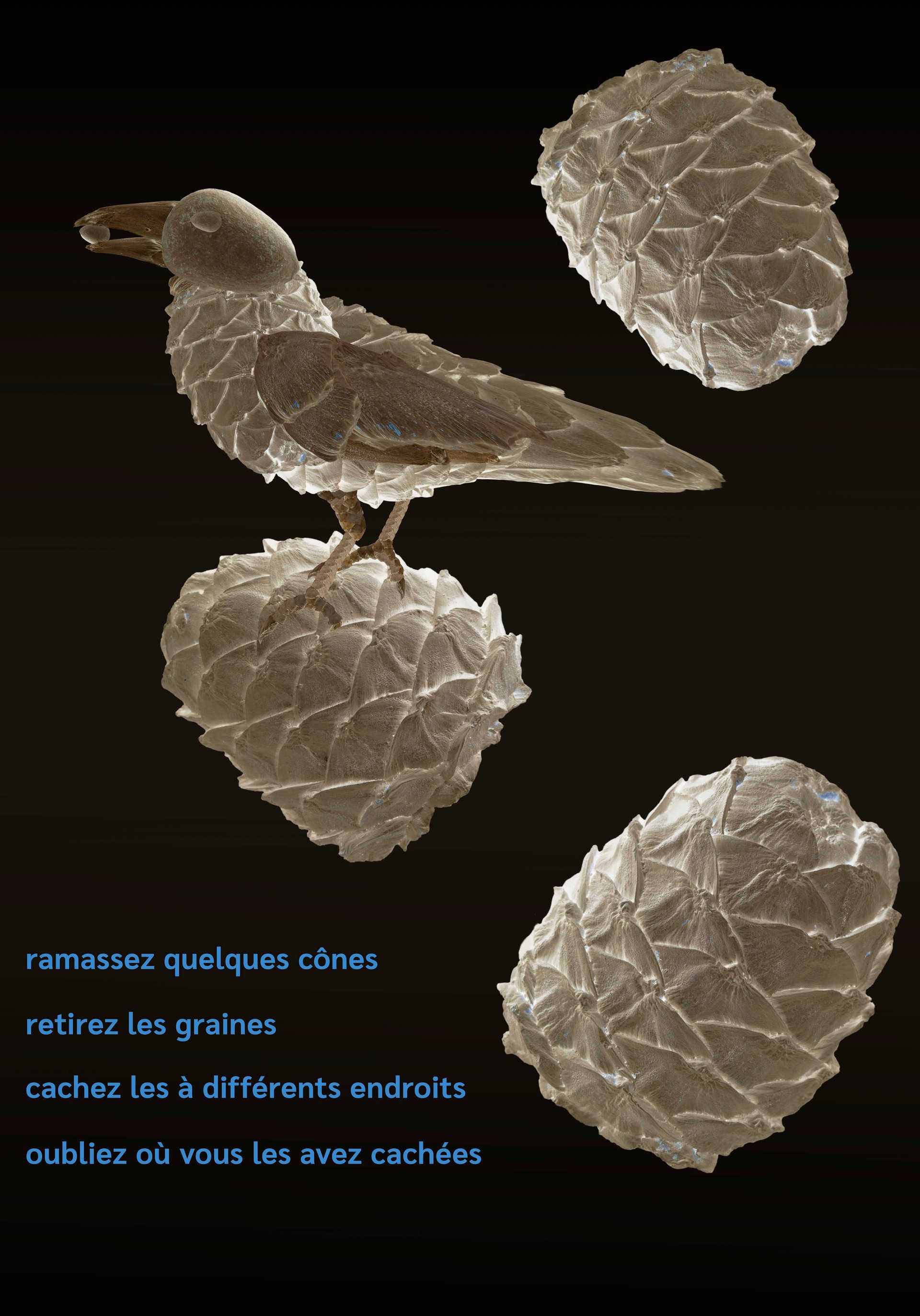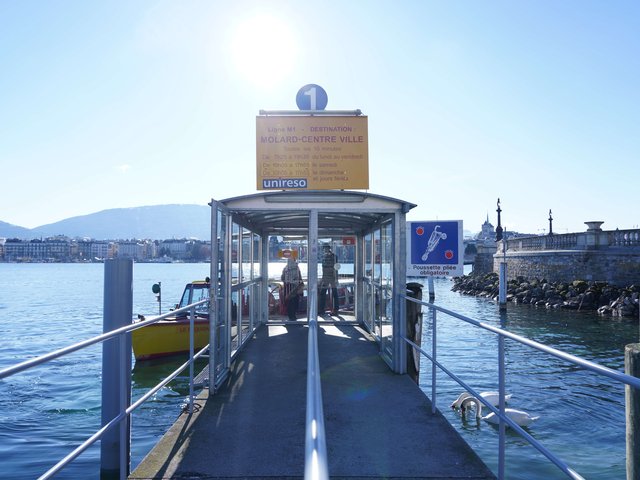Flurina Badel & Jérémie Sarbach
A golden bird, actually a spotted nutcracker (Nucifraga caryocatactes) perched on what appears to be a pine cone, holds a seed in its beak. Flurina Badel and Jérémie Sarbach invite us to put ourselves in the bird's place by planting seeds in its own way, forgetting exactly where they are scattered.



